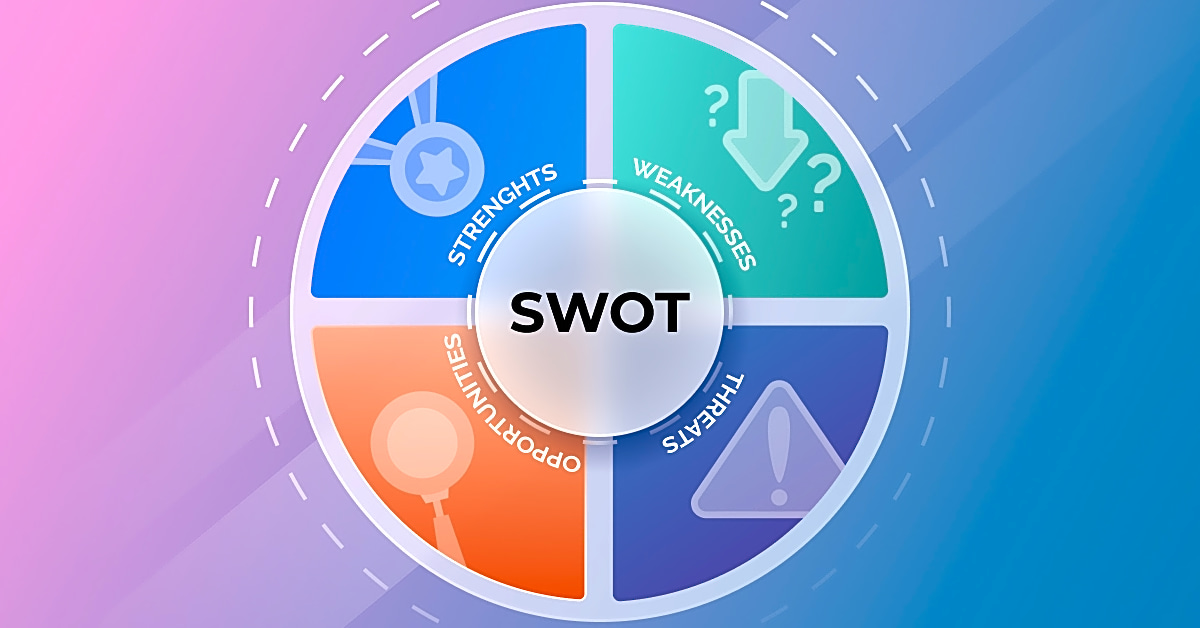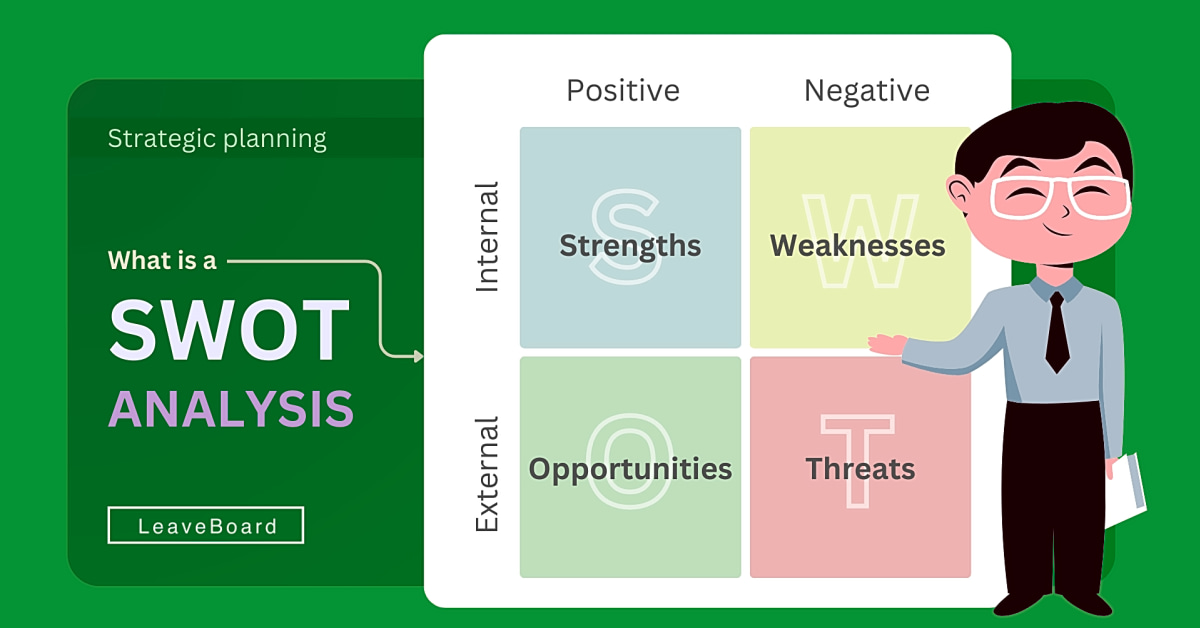SWOT analysis is a strategic planning tool that has been used by businesses and organizations for decades. It is a simple yet powerful framework that helps companies assess their internal and external environments, identify strengths and weaknesses, and capitalize on opportunities while mitigating threats. But where did this popular tool come from? In this article, we will delve into the history of SWOT analysis, exploring its evolution and applications over time.
The term SWOT stands for Strengths, Weaknesses, Opportunities, and Threats. It was first introduced in the 1960s by Albert Humphrey, a management consultant at the Stanford Research Institute. Humphrey and his team were conducting a study on the factors that contribute to business success, and they developed the SWOT analysis as a way to organize their findings.
Since then, SWOT analysis has become a staple in business strategy and planning. It has been used by companies of all sizes and industries, from small startups to global corporations. But its applications go beyond business – SWOT analysis has also been used in fields such as healthcare, education, and government.
In this article, we will not only explore the history of SWOT analysis but also discuss how it has evolved and adapted to different contexts. We will also examine the various ways in which it can be used, providing real-life examples to help you understand its practical applications.
If you are new to SWOT analysis or simply looking to refresh your knowledge, this article is for you. So let’s dive into the fascinating history of this powerful tool and discover how it can benefit your organization or business.
SWOT analysis, which stands for Strengths, Weaknesses, Opportunities, and Threats, is a popular tool used for analyzing businesses and personal goals. It provides a comprehensive overview of the internal and external factors that can impact an organization or individual’s performance. In this article, we will delve into the history of SWOT analysis and its evolution over time, as well as its various applications.
The origins of SWOT analysis can be traced back to the 1960s when it was first introduced by Albert S. Humphrey, a business consultant at the Stanford Research Institute. Humphrey developed the concept as part of a research project aimed at understanding why corporate planning failed. He believed that by identifying a company’s internal strengths and weaknesses, as well as external opportunities and threats, organizations could develop more effective strategies to achieve their goals.
Over time, SWOT analysis has evolved to become a widely accepted and utilized tool in strategic planning and decision-making. It has been adapted by various industries and organizations, including businesses, non-profits, government agencies, and even individuals. The framework has also been refined and expanded upon to cater to specific needs and contexts.
One example of SWOT analysis being applied in a different context is in education. Teachers and students can use it to evaluate their own performance and identify areas for improvement. For instance, a teacher may use the framework to assess their teaching methods (strengths), areas they need to work on (weaknesses), potential opportunities for professional development (opportunities), and potential challenges or obstacles they may face (threats).
In business, SWOT analysis is commonly used during the strategic planning process to assess an organization’s current position and inform future decisions. It can also be used when evaluating new products or services, entering new markets, or when faced with changes in the industry or market trends. For example, a company may use SWOT analysis to assess their strengths and weaknesses in relation to their competitors, identify potential opportunities for growth, and anticipate potential threats to their business.
While SWOT analysis has many applications and benefits, it is not without its criticisms and limitations. One of the main criticisms is that it oversimplifies complex issues by categorizing them into four distinct categories. This can lead to a lack of nuance and overlook important nuances that may impact decision-making. Additionally, SWOT analysis is often subjective and can be influenced by personal biases and opinions.
In conclusion, the history of SWOT analysis dates back to the 1960s when it was first introduced as a tool for understanding corporate planning failures. Over time, it has evolved to become a versatile framework used in various industries and contexts. While it has its limitations, SWOT analysis remains a valuable tool for evaluating performance, identifying opportunities, and informing strategic decision-making.
The Origins of SWOT Analysis
SWOT analysis is a commonly used tool in business and personal development, but where did it come from? Let’s take a journey back in time to explore the early beginnings of this popular framework and its original purpose.
Applications of SWOT Analysis
SWOT (strengths, weaknesses, opportunities, and threats) analysis is a strategic planning tool that has been used for decades in various industries and disciplines. Its versatility allows for its application in a wide range of contexts, making it a valuable tool for businesses, individuals, and organizations.
One of the main uses of SWOT analysis is in business strategy. By identifying the strengths and weaknesses of a company, as well as the opportunities and threats in its external environment, businesses can make informed decisions and develop effective strategies for growth and success. SWOT analysis can also be used to assess the competition and understand the market landscape, helping businesses gain a competitive advantage.
On an individual level, SWOT analysis can be a powerful tool for personal development. By conducting a self-assessment and identifying personal strengths and weaknesses, individuals can set goals and make decisions that align with their strengths and mitigate their weaknesses. This can lead to improved performance and overall success in both personal and professional endeavors.
SWOT analysis can also be used in decision-making processes. By considering all four elements (strengths, weaknesses, opportunities, and threats), individuals or organizations can weigh their options and make informed decisions that align with their goals and values.
The Evolution of SWOT Analysis
SWOT analysis, or Strengths, Weaknesses, Opportunities, and Threats analysis, is a popular tool used in business and personal goal setting. It has a rich history that dates back to the 1960s when it was first developed by Albert Humphrey at the Stanford Research Institute.
Originally, SWOT analysis was used as a strategic planning tool for businesses, helping them to identify their internal strengths and weaknesses, as well as external opportunities and threats in their industry. However, over time, it has evolved and been adapted for various uses and industries.
One of the major adaptations of SWOT analysis is its use in personal development and goal setting. By applying the same principles to oneself, individuals can identify their personal strengths and weaknesses, as well as opportunities and threats in their personal lives.
Additionally, SWOT analysis has also been adapted for use in different industries such as education, healthcare, and non-profit organizations. Each industry may have its own unique set of factors to consider when conducting a SWOT analysis.
The evolution of SWOT analysis has also seen the incorporation of other factors such as PESTEL (Political, Economic, Social, Technological, Environmental, and Legal) analysis, which expands the scope of the analysis beyond just internal and external factors.
Overall, the evolution of SWOT analysis has made it a versatile and widely-used tool for analyzing businesses and personal goals. Its adaptability and flexibility have allowed it to remain relevant and valuable in various contexts throughout the years.
The history of SWOT analysis dates back to the 1960s, when it was first introduced as a tool for strategic planning in businesses. Over the years, it has evolved and expanded its applications to various industries and personal goals, making it a versatile and valuable tool.
Key takeaways from this article include the origins of SWOT analysis, its evolution, and its applications in today’s business world. It is clear that SWOT analysis has become an essential part of strategic planning for organizations, as well as for individuals looking to achieve their goals.
Overall, the history of SWOT analysis showcases its effectiveness and relevance in the constantly changing business landscape. Its simplicity and flexibility make it a valuable asset for decision-making and goal-setting.


